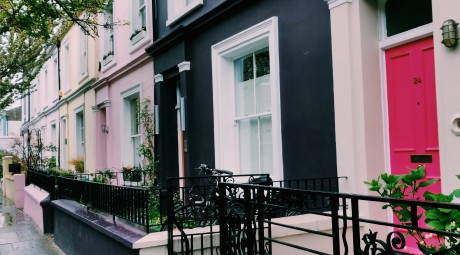Help to Buy – The past, present and future
October 6th, 2016

When & why was the Help to Buy Introduced?
The Help to Buy scheme was first announced by George Osborne in March 2013 and is known to be the biggest government intervention in the housing market since the 1980s. The scheme was created to help first-time buyers (with relatively low deposits) onto the property ladder by facilitating the purchase of newly built properties. Subsequently, by making the purchase of new-builds more affordable and desirable, the demand for newly built properties would also increase and therefore the supply side of the housing market would be further stimulated i.e.: more new builds must be built to meet this increase in demand (helping the economy, housing sector, employment, etc…)
What is the Help to Buy Scheme?
Part 1 (Help to Buy Equity Loan) – Extended to 2020
- Available to all first-time buyers and homeowners (no maximum income requirement)
- Scheme restricted to newly built properties only (worth up to £600,000)
- Must be used to purchase your only residence (cannot be used if you have any other investment properties)
- The buyer would only need to raise 5% of the purchase price of a property*
- The government will provide a further 20% loan (buyers buying in London can acquire 40% loans)
- Buyer’s deposit now becomes 25% of the property value
- More attractive mortgage rates become available
- The buyer would have much lower monthly mortgage repayments
*In the UK (after the 2008 recession) without the Help to Buy scheme, buyers generally require 15% – 20% deposit to purchase a new build property
Example:
A buyer purchasing a newly built apartment for £300,000 would commonly require around £60,000 deposit to secure a mortgage – meaning they will be borrowing £240,000.
With the Help to Buy scheme, the buyer purchasing the same property would require just £15,000 (£45,000 less) – the government will add 20% to this deposit (£60,000) – meaning the combined purchaser deposit is now £75,000 – so the buyer is now only borrowing £225,000.
- For the first 5 years, the government’s 20% loan is interest-free
- In year 6, the purchaser will be charged 1.75% interest which will climb at a rate of 1% of that figure plus any increase in inflation every year thereafter
- Purchasers can choose to repay the equity loan at any time, without penalty
- They can pay back either 10% or 20% of the total amount so long as the loan is worth at least 10% of the value of the property
- If the loan is not repaid back whilst the buyer is still living in the property, when the property is sold, the government will reclaim its 20% stake from the current home value (regardless of the house price increase/decrease)
If the property being purchased is situated in London – the buyer can apply for an equity loan of up to 40% and not just 20% – the facts outlined above remain the same.
Part 2 (Help to Buy Mortgage Guarantee) – Expires 31st December 2016 (will not be renewed)
- Available to all first-time buyers and homeowners (no maximum income requirement)
- Unlike the Help to Buy Equity Scheme (Part 1), this scheme is not restricted to newly built properties only – i.e.: The Mortgage Guarantee element applies to both new builds & existing homes
- The maximum purchase price of £600,000 remains the same
- Buyers will only be required to raise 5% of the property value (as before)
- The government will then provide a guarantee to the mortgage lender for up to a further 15% (government acting as a guarantor for the mortgage)
- This gives banks and building societies the peace of mind to lend larger mortgages & hopefully, at lower rates than would otherwise be attached to such high loan-to-value mortgages
The Mortgage Guarantee scheme is a ‘behind-the-scenes’ arrangement between the lender and the government. While the purchaser will have to sign a declaration, it will not make any difference that their 95% mortgage falls under the Mortgage Guarantee scheme.
Our Thoughts?
It is no secret that the success behind the Help to Buy scheme is mainly down to the equity loan aspect (Part 1) and not necessarily the mortgage guarantee element (Part 2), and therefore the government’s recent decision to no longer extend the mortgage guarantee schemes comes as no shock to us. The best rates and products were always offered to those with a higher deposit (25% in the case of the equity loan scheme), whilst the mortgage guarantee scheme failed to offer any headlining deals or products.
The Banks also believe that ‘given the decreasing usage of the scheme over time, the Financial Policy Committee judges that the closure of the scheme would be unlikely, in current market conditions, to affect significantly the provision of finance to prospective mortgagors, including high loan-to-value borrowers’.
The truth of the matter is that 95% mortgages were always available and will continue to be available. Lenders are now in a much better position (compared to 2008) to continue to offer 90% and 95% mortgages, even without the government acting as a guarantor. Santander, for instance, exited the mortgage guarantee scheme very early on (prior to any government announcements) but maintains a strong presence in the 95% loan to value market. Furthermore, lenders such as Nationwide have never been part of the mortgage guarantee scheme (did not sign up in October 2013) but nevertheless continue to offer 95% loan-to-value mortgages. Most recently, the lender has just introduced two new 2-year 95% tracker rate (3.59%) products. The list continues, with the Yorkshire Building Society, offering products at 95 percent LTV for some time without relying on the government guarantee. TSB and Tesco Bank have also launched into 95 percent LTV without using the guarantee (the list goes on).
In short, with the Bank of England cutting interest rates to an all-time low of just 0.25%, and lenders subsequently passing this on – we believe now is the best time to secure a mortgage.
Rates on 2 year, fixed-rate mortgages, for example, are already at an all-time low, due to tough competition amongst lenders to attract new customers.
Figures show that the property market has remained strong (to date) and although Brexit negotiations (triggered March 2017) will undoubtedly unsettle the market as a whole next year to some extent, we believe making the right decisions now is what is crucial.
The views expressed in this article is a reaction to the announcement that government is scrapping the ‘help to buy mortgage guarantee scheme’ and reflect our opinions and that of several market experts we have spoken to.
If you wish to discuss any of the points raised or to speak about new and off plan homes, feel free to contact us directly.
N.B. Your property may be repossessed if you do not keep up repayments on your mortgage.

Leave a Reply